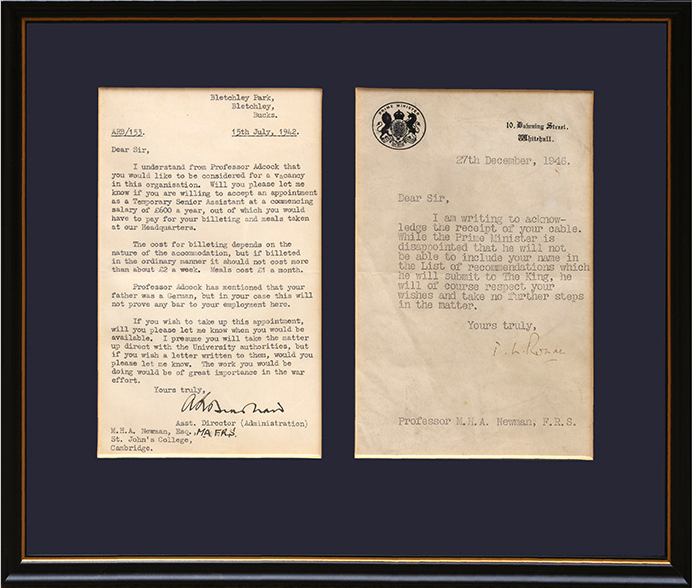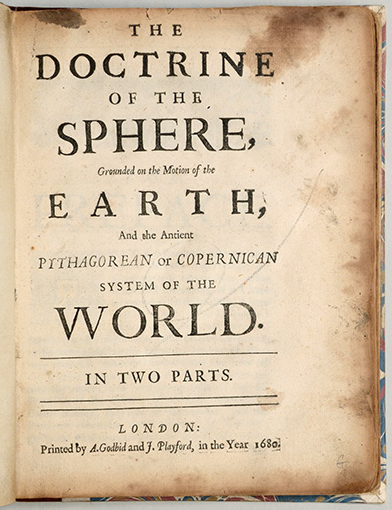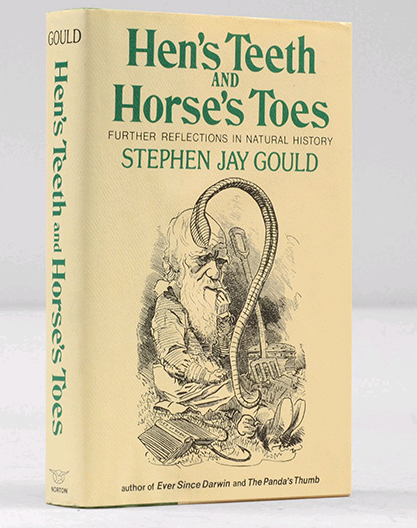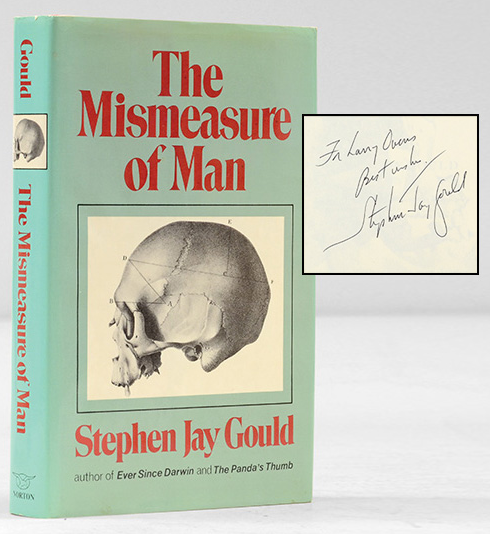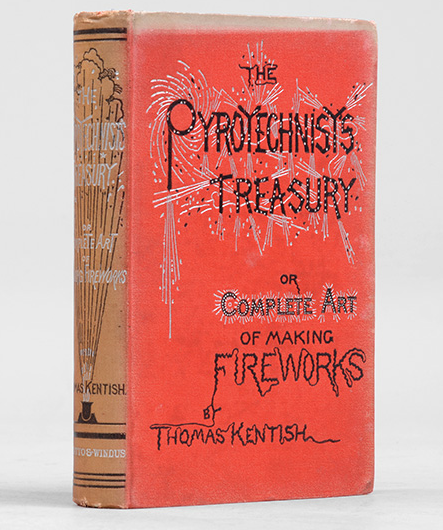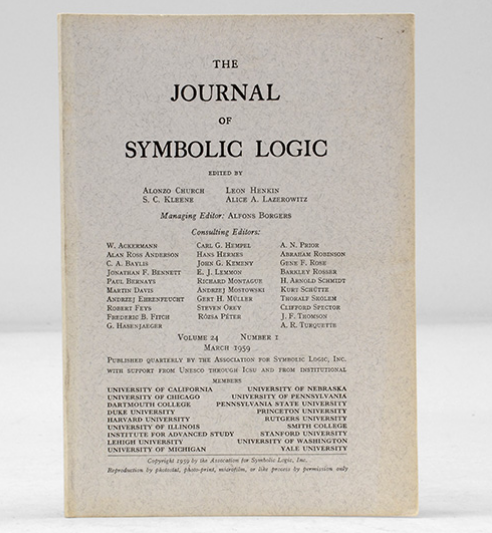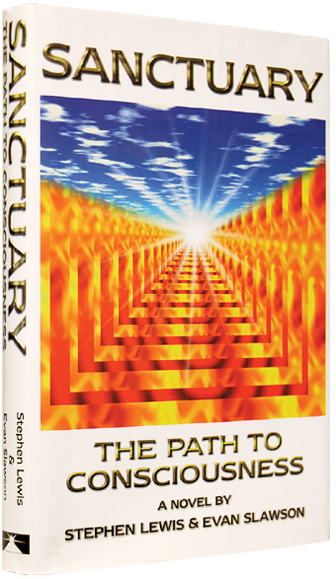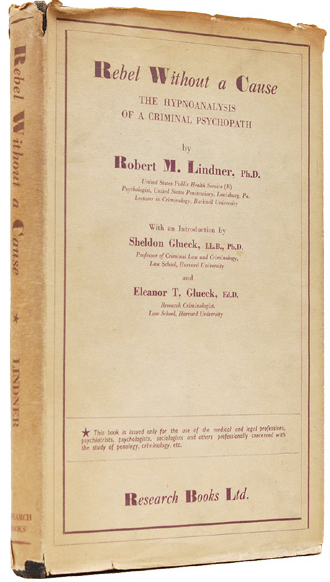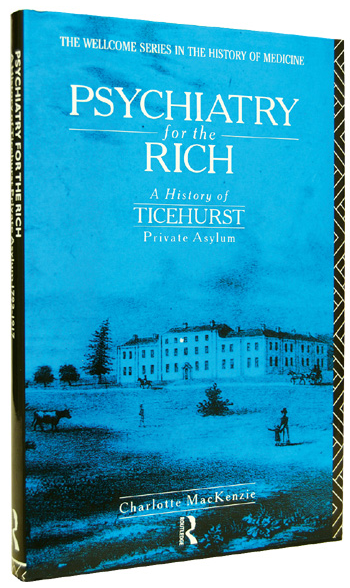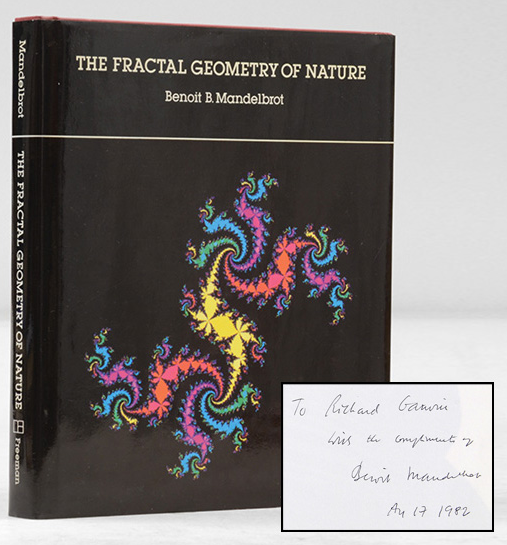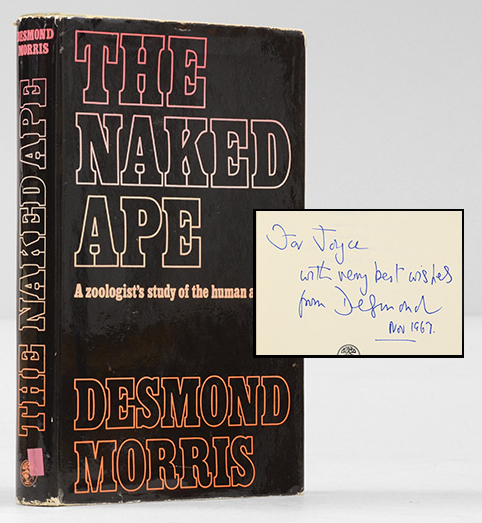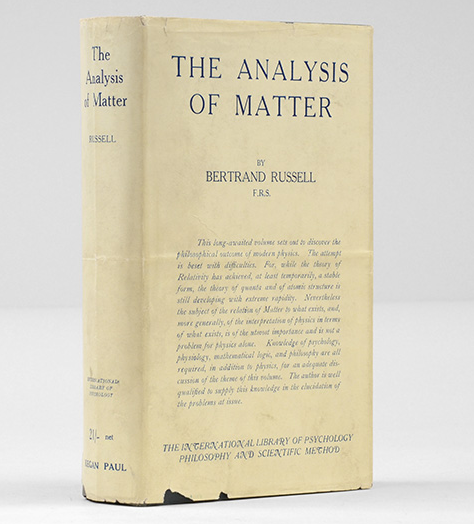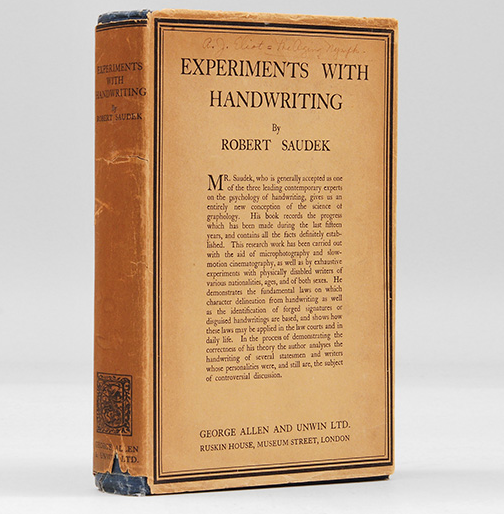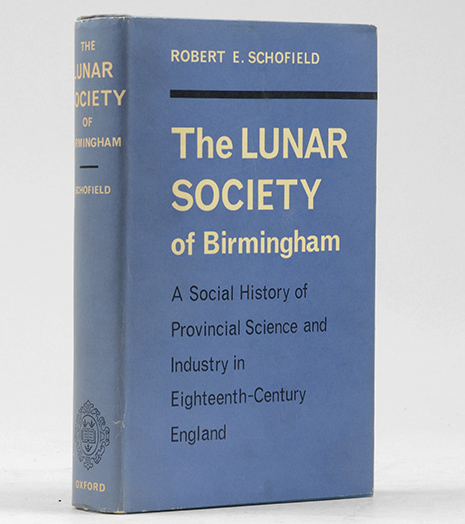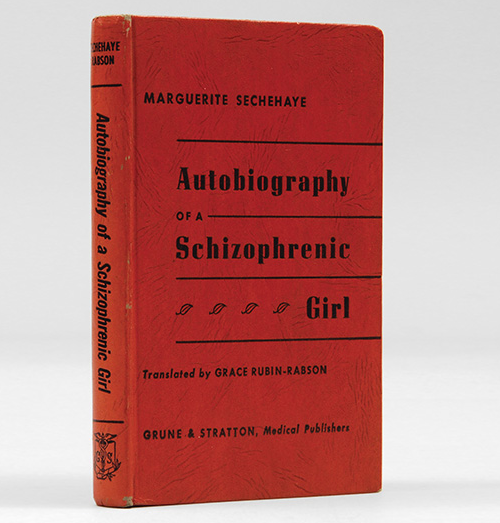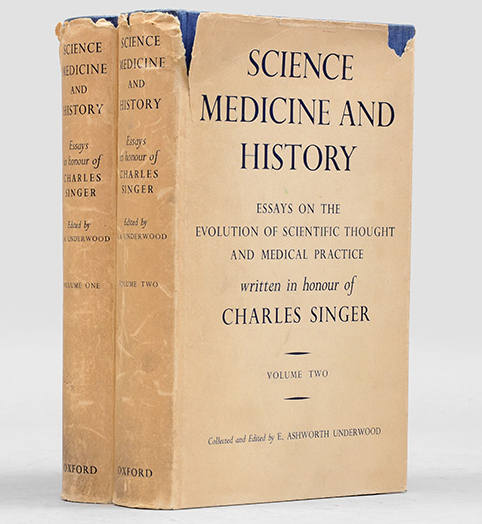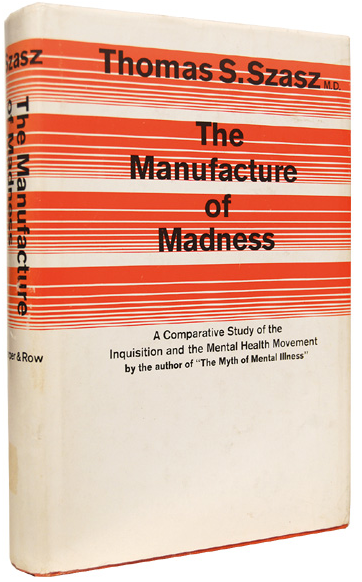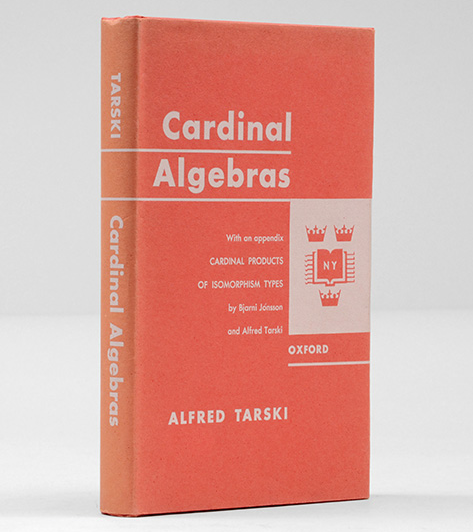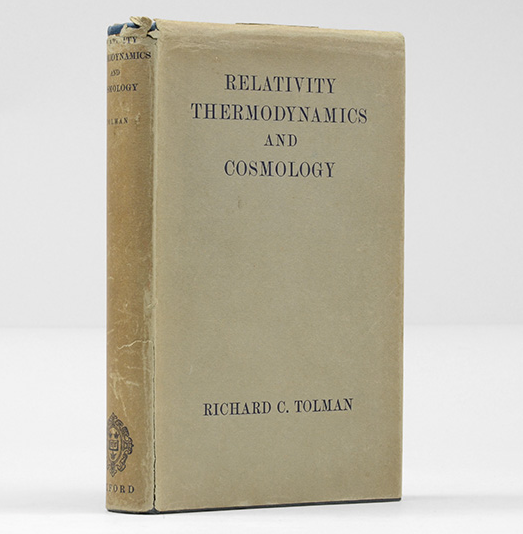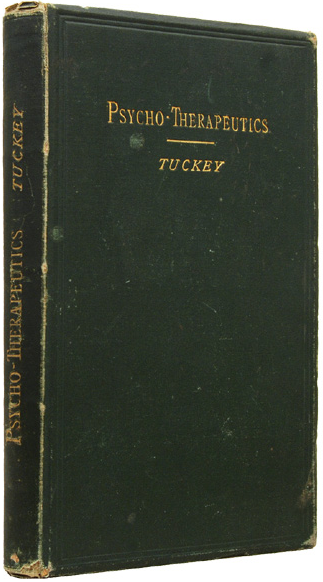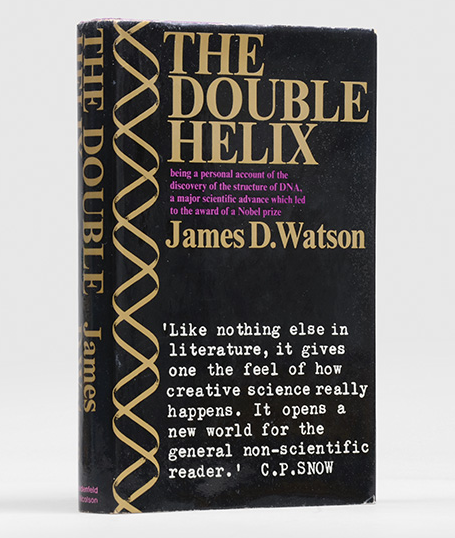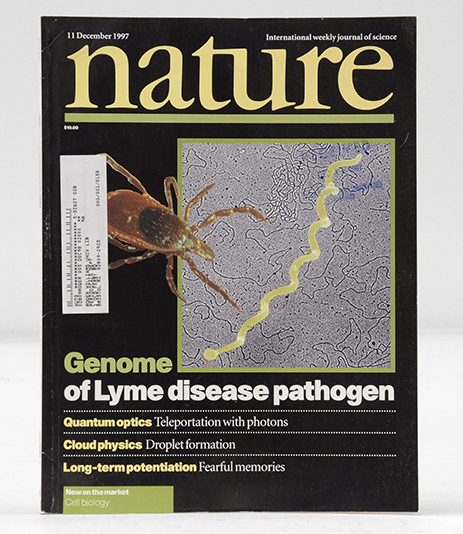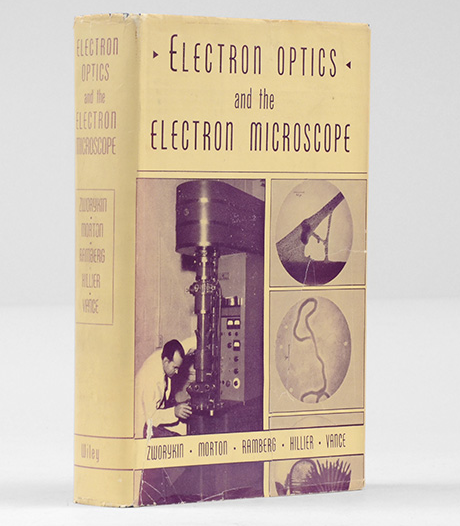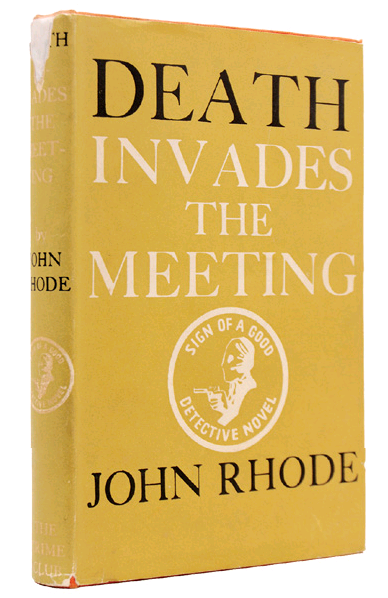Those who pass by our Fulham Road shop on a regular enough basis will already be aware that our window display changes frequently. Just in case you won’t have the chance to see it for yourself, we thought we’d keep you up-to-date on the books, prints and curiosities making an appearance each time a reshuffle takes place.
Below you’ll find listings for each of the items featured; Should you wish to enquire further, you can simply email mail@peterharrington.co.uk
1 (BLETCHLEY PARK) NEWMAN, Max. Two letters bracketing Newman’s career at Bletchley.
1942-6
2 octavo one-page, typed letters, signed. Now window-mounted, framed and glazed. A little browned, signature on the second slightly faded, but overall very good.
A highly evocative pair of letters to Max Newman, the first relating to his recruitment to the Government Code and Cypher School at Bletchley Park, the second to the conclusion of his wartime work there. Maxwell Herman Alexander “Max” Newman (1897–1984) was one of the most significant British mathematicians of his generation and a leading pioneer in modern computer science. At the outbreak of the war, Newman was lecturing in mathematics at Cambridge, where his 1935 lectures on the Foundations of Mathematics and Gödel’s Theorem had inspired Alan Turing to work on solving Hilbert’s Entscheidungsproblem using a hypothetical computing machine. Subsequently it was Newman who rushed through publication of Turing’s “On Computable Numbers with an Application to the Entscheidungsproblem”, and arranged for him to spend time at Princeton where Alonzo Church was attacking the same problem by different, but not incompatible, methods. In 1942, Newman had decided to offer his services to the war effort, and approached the Naval Intelligence Division, being interviewed by the classicist Prof. Frank Adcock, whose Bletchley involvement is interestingly entirely missing from his ODNB entry.
The first letter, dated 15 July 1942, is from Alan Bradshaw, at the time Assistant Director (Administration), later Deputy Director, at Bletchley and one of the unsung heroes of the operation, and is on the “headed notepaper” of the establishment, which, perhaps consonant with the perceived ethos of the place, has the address “Bletchley Park, Bletchley, Bucks.” simply typed at the head. Bradshaw explains that he has heard from Prof. Adcock that Newman “would like to be considered for a vacancy in this organisation”, and would like to know if he would be “willing to accept an appointment as a Temporary Senior Assistant at a commencing salary of £600, out of which you would have to pay for your billeting and meals taken at our Headquarters”. He then goes on succinctly to address Newman’s two major concerns about the possibilities of working at Bletchley. Newman’s father was a German Jew who emigrated to Britain with his family in 1912, and Newman was concerned that this would bar him from top secret work, but Bradshaw assures him that “in your case this will not prove any bar to your employment here”. He was also worried that the work he undertook would be sufficiently stimulating, and of genuine utility, and Bradshaw is laconically to the point; “The work you would be doing would be of great importance in the war effort”. And so it was to prove.
Once at Bletchley, Newman realised that some of the methods used by the Bletchley codebreakers would be better performed with mechanised assistance; he and Alan Turing proposed the logical requirements for such machinery. These requirements formed the basis of practical machines, culminating with the Colossus, the world’s first large-scale electronic computer, and the section at Bletchley that used the machinery was headed by Newman and came to be known as the Newmanry. Contrary to popular belief Colossus was not responsible for breaking Enigma, that honour fell to Turing and Welchman’s Bombe, rather Newman’s machine broke “Tunny” the coding associated with the Lorenz SZ-40/42, an electromechanical wheel-based cipher machine for teleprinter signals which was used for messages at the very highest command levels. At the end of the war, Newman was appointed Fielden Professor of Pure Mathematics at the University of Manchester, a position that he held until his retirement in 1964. In 1946 he established the Royal Society Computing Machine Laboratory, which in 1948 developed the first stored-program digital computer, the Manchester Baby.
The second letter, 27 December 1946, is on Downing Street stationery, over the signature of Leslie Rowan, Churchill’s principal private secretary, and acknowledges “the receipt of your cable”, and communicates the Prime Minister’s disappointment “that he will not be able to include your name in the list of recommendations which he will submit to The King”. Newman declined an OBE, an award that had already been conferred on his pupil Turing, on the grounds that it was derisory in view of their contribution to the outcome of the conflict.
The two offer a pleasing encapsulation of some of the ambiguities and oddities of operations of Bletchley Park, and in so doing accentuate just how remarkable it was that the project should have succeeded as it did.
£2,500
2 BRISTOWE, W. S. The World of Spiders. The New Naturalist Number 38. With 14 Plates of Photographs, 4 in Colour, and Drawings by Arthur Smith Comprising 22 Half Tone Plates and 116 Figures.
London: Collins, 1958
Octavo. Original green cloth, titles to spine gilt. 44 plates of which 4 are in colour, illustrations throughout the text. Cloth slightly puckered, a few spots and tape marks to endpapers. An excellent copy in the bright, price-clipped jacket with only a short closed tear at the head of the spine panel.
First edition, first impression. A very attractive copy.
£100
3 CAMPBELL, Norman Robert, & Dorothy Ritchie. Photoelectric Cells. Their Properties, Use, and Applications.
London: Sir Isaac Pitman & Sons, Ltd., 1929
Octavo. Original blue cloth, titles to spine and upper board gilt. With the dust jacket. Frontispiece, diagrams throughout. Ownership signature to front pastedown. Contents lightly tanned. An excellent copy in dust jacket with very mild rubbing and creasing to the edges; uncommon in the jacket.
First edition, first impression.
£200
4 (CHARCOT) GOETZ, Christopher C.; Michel Bonduelle; Toby Gelfand. Charcot – Constructing Neurology.
New York and Oxford, Oxford University Press, 1995
Octavo. Original pictorial laminated boards. Illustrations to the text. Fine.
First Edition. Acclaimed biographical study of “the Napoleon of the neuroses”, whose notorious demonstrations of hypnosis at the famous Salpêtrière Hospital made him a celebrity in Paris.
£85
5 COMFORT, Alex The Biology of Senescence.
London: Routledge & Kegan Paul, 1956
Octavo. Original purple cloth, titles to spine gilt. With the dust jacket. Spotting to endpapers and edges of text block. An excellent copy in the jacket that is a little rubbed and creased along the edges.
First edition, first impression of this “standard work” on the biology of ageing, “remarkable also for the quality of writing”. Though he is best known as the author of The Joy of Sex, Comfort’s career began as director of research in gerontology at University College, London, and he later served as president of the British Society for Research on Ageing, and the first president of the geriatrics and gerontology section of the Royal Society of Medicine. Scarce in the dust jacket.
£75
6 (CURRAN, Jim) KRAUCH, Elsa. A Mind restored. The Story of Jim Curran. Introduction by William Seabrook.
New York, G.P. Putnam’s Sons, 1937
Octavo. Original grey cloth lettered in yellow, in dust jacket. Light marginal browning, else very good, dust jacket rubbed and with a few splits and minor tears, but largely complete.
First Edition. “The story of a successful businessman who became just psychotic enough so that he failed in his work, lost all his money, and largely for lack of money for board, had to live in a mental hospital.”
Original receipt for purchase and shipping to the children’s author Oliver Roberts Barton loosely inserted. Later ink ownership stamp of Saul Rosenzweig, psychologist and the founder of the Common Factors Movement in psycho-therapeutics.
Hornstein p.9; Alvarez pp.264-8
£65
7 DARWIN, Charles. On The Origin of Species by Means of Natural Selection, or the Preservation of Favoured Races in the Struggle for Life. Fifth Edition, with additions and corrections. (Tenth thousand.)
London: John Murray, 1869
Octavo. Original green fine sand-grain cloth, titles to spine gilt, decorative panels blocked in blind to sides, black endpapers: Freeman’s variant “a” binding with the title on the spine in roman capitals. Folding lithographic diagram. Calligraphic inkstamp of Polish scholar Tadeusz Sulimirski (1898–1983) at head of title. Extremities rubbed, spine ends nicked, inner hinges with superficial cracks but holding firm, a very good copy.
Fifth edition. This edition sees the first use by Darwin of Herbert Spencer’s phrase “survival of the fittest”, appearing in the heading of chapter IV and in the text.
Freeman 387.
£2,500
8 DIJKSTRA, Edsger W. A Note of Two Problems in Connection with Graphs. In Numerische Mathematik I. Recursive Programming, in Numerische Mathematik 2.
Berlin: Springer-Verlag, 1959
2 volumes, octavo (251 × 161 mm). Contemporary library bindings of black half patterned skiver, hand-written paper labels to spines, marbled sides. Library stamps of the Bibliothek Ingenieurschule, Hamburg, and deaccession stamps to title pages, page 1 of each volume, and to page 15 of volume I and 13 of volume II, library bar code ticket to each rear pastedown. Slight toning of the marbled sides. Contents clean and fresh. An excellent set.
First editions, first impressions of two of Dijkstra’s most significant papers, both rare in commerce: “A Note of Two Problems in Connection with Graphs”, which introduced the Shortest-Path Algorithim (now known as Dijkstra’s algorithim) as well as the Minimum Spanning Tree Algorithm, and “Recursive Programming”, which introduced the foundational concept of using a “stack” for recursive programming. Edsger W. Dijkstra (1930–2002) was a pioneering computer scientist, responsible for many of the algorithms and concepts that form the basis of modern software engineering. He was a founder of the structured programming paradigm, which sought to improve the clarity and efficiency of programming, and also did important early work in distributed computing – the origins of the modern internet. In 2001 he received the Turing Award, often described as the Nobel Prize of computer science, for “fundamental contributions to programming as a high, intellectual challenge; for eloquent insistence and practical demonstration that programs should be composed correctly, not just debugged into correctness; for illuminating perception of problems at the foundations of program design” (Turing Award biography). Not in Origins of Cyberspace.
£4,750
9 DU TOIT, A. L. Our Wandering Continents. An Hypothesis of Continental Drifting.
Edinburgh: Oliver and Boyd, 1937
Octavo. Original dark red cloth, titles to spine gilt. With the dust jacket. With 48 maps and diagrams. Near contemporary gift inscription to front free endpaper. Boards gently splayed, head of spine slightly bumped, light crease to fore margin of first few leaves. An excellent copy in a likewise excellent jacket with toned spine and rear panel, lightly nicked and chipped extremities, minor loss to head of spine, and a short closed tear to top of front panel.
First edition, first impression. The South African geologist Alexander Logie du Toit (1878–1948) was an early supporter of the theory of continental drift proposed by Alfred Wegener (1880–1930). However, du Toit differed from Wegener in terms of the number of supercontinents envisaged: Wegener suggested a single original continent (Pangaea) while du Toit instead proposed two continents (Laurasia and Gondwana).
£575
10 EINSTEIN, Albert. Mein Weltbild.
Amsterdam: Querido, 1934
Octavo. Original black cloth, titles to spine and upper board gilt. With the dust jacket. Housed in a black cloth folding case. Ownership signature to front free endpaper. Light partial tanning to free endpapers. An excellent, sharp copy in the jacket which is rubbed and creased with toned spine panel, chips, closed tears, and a faint spot of dampstain to the upper panel.
First edition, first impression. Inscribed by the author on the title page, “Gesammelte Länder , Albert Einstein” under the printed title which has been struck through. Einstein’s inscription seems to refer to the German title, which means approximately “My World View”. This volume is rare signed and contains five essays by Einstein on science, religion, politics, and philosophy: “The World As I See It”, “Of Politics and Pacifism”, “Germany 1933”, “Judaism”, and “Science”. Since his childhood in Prussia Einstein had been opposed to militant nationalism and enforced conformity, even renouncing his German citizenship for that of Switzerland as a teenager. As he grew in stature as a physicist he began using his celebrity to promote his philosophical ideals – internationalism, pacifism, and Zionism – earning him much vitriol from the far-right but endearing him to millions of others around the world. This edition is entirely in German; the first English language edition was published in the US in 1949.
£8,000
11 (EINSTEIN, Albert.) FRANK, Philipp. Einstein. His Life and Times. Translated from the German Manuscript by George Rosen. Edited and Revised by Shuichi Kusaka.
New York: Alfred A. Knopf, 1947
Large octavo. Original red cloth, titles to spine and upper board gilt. With the dust jacket. Lightly rubbed and a little dulled at extremities, small spot of dampstain to lower board, partial tanning to endpapers, contents faintly toned. An excellent copy in the lightly rubbed jacket with some nicks and short splits and tape repairs on the verso.
First edition, first printing of Frank’s classic and often cited biography. Inscribed by Einstein on the front free endpaper, “For Mrs. Lazarus, A. Einstein 1947 (without responsibility for the content)”. Philipp Frank (1884-1966) was a life-long friend of Einstein’s and an important physicist and philosopher in his own right. Einstein thought highly enough of Frank that in 1912 he recommended him as his replacement at the Charles-Ferdinand University of Prague, a position that Frank held until 1938 when he moved to the United States and joined the faculty at Harvard.
£6,875
12 (EINSTEIN, Albert.) MULLER, J. J. Original etching of Albert Einstein.
For J. J. Muller,
Sheet size: 265 × 212 mm. Image size: 201 × 150 mm. Mounted, glazed, and framed. Etching on 1848 charcoal rag laid paper. Fine condition.
An engraving of the scientist, signed lower middle in blue ink by Einstein and lower right in black ink by Muller. The artist was a well regarded printmaker active in Germany during the Weimar period. Signed images of Einstein of this period are uncommon.
£6,000
13 (EUCLID.) BYRNE, Oliver. The first six books of The Elements of Euclid in which coloured diagrams and symbols are used instead of letters for the greater ease of learners.
London: William Pickering, 1847
Quarto (233 x 185 mm). Rebound to style in dark blue half calf, spine gilt in compartments, red morocco labels, raised bands, marbled paper sides, brown endpapers. Geometric diagrams printed in red, blue and yellow; printed in Caslon old-face type with ornamental initials by C. Whittingham of Chiswick. Board edges lightly rubbed, spotting and offsetting as virtually always with this book. A very good copy.
First edition of this celebrated book, the most interesting and inventive attempt to revisualise the classic ur-text of geometry by printing the diagrams in various colours, a method which stretched the printers’ skills to their utmost. Oliver Byrne (c.1810–c.1890) is described on the title page as “Surveyor of Her Majesty’s Settlements in the Falkland Islands and Author of Numerous Mathematical Works”. He was appointed professor of mathematics, at the College for Civil Engineering, Putney, at the age of 20. The 1871 census lists his place of birth as Leyden, Holland.
McLean, Victorian Book Design, p. 70.
£6,750
14 FAJANS, K. Radioactivity and the Latest Developments in the Study of the Chemical Elements. Translated from the fourth German edition by T. S. Wheeler and W. G. King. With eleven diagrams, fourteen tables, and appendix to the English translation.
London: Methuen & Co. Ltd., 1923
Octavo. Original green cloth, titles to spine gilt and to cover blind stamped. With the dust jacket. Black and white diagrams throughout. Ownership signatures to front free endpaper. Partial browning to endpapers, corners lightly bumped, bottom edge of rear cover slightly warped. An excellent copy in the rubbed and nicked jacket with browned spine panel.
First edition in English, first impression. Kazimierz Fajans (1887–1975) was a pioneer in physical chemistry and the study of radiation. In 1910 he was hired by the lab of Ernest Rutherford, just as Rutherford was making his monumental discovery of atomic structure. Fajans continued this research in Europe, working in Germany until fleeing Nazi persecution in 1935, then holding academic positions in England and the United States. His most significant accomplishments include the discovery of new radioactive isotopes, their properties, and the rules governing radioactive moves, or the ways that elements change as they undergo alterations to the nucleus.
£300
15 The Doctrine of The Sphere, Grounded on the Motion of the Earth, and the Antient Pythagorean or Copernican System of the World. In Two Parts.
London: A. Godbid and J. Playford, 1680
Quarto (230 × 178 mm). Recent quarter brown calf to style, red morocco label, marbled sides. Woodcut initials and headpieces, 6 plates of which 4 are folding, 27 pages of letterpress tables at rear. Contemporary annotations throughout. Some closed tears to plates, the two folding plates between pages 63 and 65 repaired on the versos, sig. E2 torn at lower outer corner, the paper replaced with 4 or 5 words either side of the leaf supplied in photographic facsimile. A good copy.
First edition of Flamsteed’s first work, published as part of Jonas Moore’s posthumously published New Systeme of the Mathematicks (1681). The work includes an improved version of Jeremiah Horrocks’s calculations of the motions of the moon, which Flamsteed had helped Horrocks prepare for publication in 1673. This copy bears several interlinear and marginal corrections which may be the author’s own. These interlinear notes correct both textual and numerical errors, and include a few corrections to the tables at end. These small corrections to text, equations or tables are apparently to be distinguished from the more copious marginalia, in a different, somewhat later hand, including mathematical calculations, notes on the calculation of distances, captions on the plates, and marginal references from the text to figures in the plates. The edition itself is rare. The Macclesfield copy, sold at auction in 2004, was also annotated by the author (hammer price £16,000).
Wing F1137; Houzeau & Lancaster 12077.
£5,000
16 GOULD, Stephen J. Hen’s Teeth and Horse’s Toes.
New York: W. W. Norton & Company, 1983
Octavo. Original green cloth backed white boards, titles to spine gilt. With the dust jacket. Boards very slightly rubbed with a small spot to the upper board. An excellent copy in the very fresh dust jacket.
First edition, first printing. Signed by the author on the half title. A lovely copy. The third collected volume of essays from Gould’s long-running column in Natural History Magazine.
£150
17 GOULD, Stephen Jay. The Mismeasure of Man.
New York & London: W. W. Norton & Company, 1981
Octavo. Original grey boards, red cloth backstrip, titles to spine in gilt and silver. With the dust jacket. An excellent copy in the jacket with slightly sunned spine panel.
First edition, first printing of one of Gould’s most famous and controversial books. Inscribed by the author on the half title, “For Larry Owens, best wishes, Stephen Jay Gould”. In The Mismeasure of Man, Gould analyses craniometry and IQ testing to point out the unconscious biases and a priori assumptions built into much “scientific” research. Though researchers recently made the case that Gould was incorrect about one aspect of the book’s argument, it still stands as an important indictment of biological determinism and a lucid reminder that those engaged in research of any type must be aware of their own privilege and biases. A superb copy, rare in such beautiful condition.
£750
18 KENTISH, Thomas. The Pyrotechnist’s Treasury The Complete Art of Making Fireworks. Second Edition, Revised and Enlarged.
London: Chatto and Windus, 1887
Octavo. Original red cloth, decorative titling in black and silver to spine and upper board, charcoal grey surface-paper endpapers. 25 plates, 32-page publisher’s catalogue dated November 1896 at the rear. Cloth somewhat sunned on the spine, and along the tops of the boards, mild mottling at the fore-edge of both boards, spine ends a touch crumpled and mildly chipping, hinges just starting, light toning, overall a very good copy.
The uncommon, definitive second edition of Kentish’s classic of pyrotechnics – “one of the greatest classic how-to-do-pyrotechnic books that have ever been written” (Philip) – just four copies of this edition recorded on Copac – NLS, Oxford, Cambridge, and TCD – no copy in BL; OCLC adds 11 copies in the US. First published in 1878, the text of the second edition was expanded by 18 pages, and 10 plates added, as the new preface explains; “The present edition contains much additional information, many fresh illustrations, and several pieces of a construction entirely new … For the rest, I have carefully revised the book throughout, and have supplied the minutest information in every instance in which it appeared to be defective … The work appears to me now complete”. All subsequent printings of Kentish’s work, from the 1899 third edition down to the current facsimile and print-on-demand editions are based upon this version. A practical manual, designed for use in the workshop and on the show-site, it is extremely uncommon to find a copy of any edition in anything approaching collector’s condition, rendering this copy of the most desirable edition in its original cloth particularly desirable.
Philip, Bibliography of Firework Books, K010.2
£2,500
19 KRIPKE, Saul A. A Completeness Theorem in Modal Logic. The Journal of Symbolic Logic Volume 24, Number 1.
New Brunswick, NJ: The Association for Symbolic Logic, March, 1959
Octavo. Original grey wrappers printed in black. A lovely, fresh copy with only the faintest toning along the wrapper edges.
First edition, first impression of the author’s first major work, published when he was only eighteen years old. Saul Kripke (1940– ) is one of the most original and influential logicians and philosophers of the present day. In 1977 the New York Times magazine described him as “one of the most penetrating minds of our time. His achievements span the disciplines of philosophy, logic and mathematics. From his post at Princeton University, where he is James McCosh Professor of Philosophy, and his previous post at Rockefeller University, Kripke has established a towering reputation as one of the two or three most eminent philosophers in the English-speaking world… Kripke’s contributions to philosophy thus far have extended the boundaries of the most unfamiliar and technical regions of modern analytic philosophy—where philosophical reasoning intermingles with abstract mathematic theory. He has worked in the field of modal logic, a branch of formal logic that has introduced ways to distinguish kinds of true statements… Before Kripke, modal logicians—including the inventor of modal logic, C. I. Lewis—did not have the mathematical tools to analyze many of the most important kinds of English sentences. One of Kripke’s major achievements has been the invention of ‘possible world semantics,’ a form of modal logic that has shown to the satisfaction of most philosophers that the common-sense understanding of the concepts ‘possibility’ and ‘necessity’ in true statements can be mathematically proved” (New York Times Magazine, August 28, 1977). A superb copy of this significant publication.
£1,700
20 KUSCH, Polykarp. Magnetic Moment of the Electron. Science, February 10, 1956. Volume 123, Number 3189, pages 207–211.
1956
8 page offprint, staple-bound. Minor horizontal and vertical creases from folding. Superb condition.
Offprint from the journal Science based on the speech given by Kusch upon receiving the Nobel Prize in Physics in 1955, inscribed by the author “With best wishes, P. Kusch”. Rare inscribed. Kusch (1911–1993) was a pioneer of molecular beam magnetic resonance experiments, in which a gas at high pressure is channelled into a chamber at low pressure to form a steady, collision-free beam of particles. Kusch and his colleagues used these beams to study atomic and nuclear magnetic moments and spins. “In 1947, when many theorists believed that the electron magnetic moment was exactly one Bohr magneton, Kusch and Henry M. Foley, by magnetic resonance experiments on different states of gallium, indium, and sodium showed that the magnetic moment of the electron was 1.00119 ± 0.00005 Bohr magnetons, in agreement with J. Schwinger’s relativistic quantum electrodynamics ” (National Academy of Sciences obituary). For determining the precise magnetic moment of the electron, Kusch was awarded half the 1956 Nobel Prize in physics. His Nobel address “demonstrated both his modesty in theoretical physics and his clear recognition of the importance of reliable and accurate measurements, such as his own, in exploring new scientific frontiers… the magnetic resonance method, which Kusch pioneered, later became the forerunner of other fields of magnetic resonance research, including nuclear magnetic resonance (NMR), a highly effective and very important method for chemical analysis; and magnetic resonance imaging (MRI), a powerful tool for medical diagnosis” (NAS obituary). Autograph material by Kusch is rare.
£475
21 LEWIS, Stephen, & Evan Slawson. Sanctuary. The Path to Consciousness.
Santa Monica, HTTPress, 1998
Octavo. Original red cloth-backed blue boards, titles to spine gilt, decoration to upper board in blind. With the dust jacket. An excellent copy in the dust jacket.
First Edition, First Printing. With the author’s signed presentation inscription to the front free endpaper, “To Ann welcome to sanctuary Steve.”
£65
22 LINDNER, Robert M. Rebel Without a Cause. The Hypnoanalysis of a Criminal Psychopath. Introduction by Sheldon Glueck and Eleanor T. Glueck.
London: Research Books, Ltd, 1945
Octavo. Original black cloth, titles to spine gilt. With the dust jacket. Black pen mark covering “all rights reserved” statement on the verso of the title page. Binding lightly rubbed. A very good copy in the rubbed, nicked, creased, and tanned jacket.
First UK edition, first impression. Originally published in the US in 1944.
£45
23 MacKENZIE, Charlotte. Psychiatry for the Rich. A History of Ticehurst Private Asylum, 1792-1917.
London and New York, Routledge 1992
Octavo. Original black cloth in dust jacket. Tables to the text. Near fine.
First Edition. Revealing account of the Trade in Lunacy in the C19th.
£95
24 MANDELBROT, Benoit B. The Fractal Geometry of Nature.
San Francisco: W. H. Freeman and Company, 1982
Quarto. Original red boards, titles to spine and fractal design to upper board gilt, fractal endpapers. With the dust jacket. Illustrations throughout. Tiny amount of adhesive residue to joints, upper corner bumped. An excellent copy in the very lightly rubbed jacket.
Second edition. Inscribed by Mandelbrot on the half title, “To Richard Garwin, with the compliments of Benoit Mandelbrot, Au 17, 1982”. A beautiful copy of this volume, substantially revised from the original 1977 publication titled Fractals.
£3,000
25 MORRIS, Desmond. The Naked Ape. A Zoologist’s Study of the Human Animal.
London: Jonathan Cape, 1967
Octavo. Original green cloth-backed brown and white boards, spine lettered in gilt, pale green and white endpapers, top edge purple. With the dust jacket. Board edges darkened, cloth marked. A very good copy in the jacket that has some nicks and chips to extremities.
First edition, first impression. Presentation copy, inscribed by the author on the title page: “To Joyce, with very best wishes, from Desmond. Nov. 1967.” A zoological portrait of homo sapiens.
£250
26 PALMITER, Richard, & Ralph L. Brinster. Five Offprints on the Transgenic Mouse. Somatic Expression of Herpes Thymidine Kinase in Mice Following Injection of a Fusion Gene Into Eggs (Cell 27:332-231, 1981); Regulation of Methallothionein-Thymidine Kinase Fusion Plasmids Injected Into Mouse Eggs (Nature 296:39-42, 1982); Dramatic Growth of Mice that Develop from Eggs Microinjected with Methalliothionein-Growth Fusion Genes (Nature 300:611-615, 1982); Methalliothionein-Human GH Fusion Genes Stimulate Growth of Mice (Science 222:809-814, 1983); Transgenic Mice – The Early Days (Int. J. Dev. Biol. 42:847-854, 1998).
1981-98
5 offprints, of which 4 are staple bound in original self-wraps. 1 offprint with original colour pictorial wrappers. Fine condition.
Offprints of five papers on the development of the transgenic mouse, one of the most important lines of research in 20th-century biotechnology. The first four offprints in this group are key technical papers in the development of transgenic mice, and the fifth is a short memoir by Palmiter in which he warmly recounts his partnership with Brinster and their work in this important field. In 1974 Rudolf Jaenisch created the world’s first transgenic organism – a creature whose genome incorporates and uses genetic material from another species – by injecting retroviral DNA into a mouse embryo. The DNA was then shown to be present in every cell of the mouse’s body, but was not passed on to the mouse’s offspring, and other scientists around the world continued this line of research. Before working on transgenic mice the authors of the present offprints, Palmiter and Brinster, both made major contributions to embryology and genetics. In the 1960s Brinster developed the first reliable in vitro culture system for mammalian embryos, which is today the basis for all transgenic, stem cell, cloning, and in vitro fertilisation technologies, and he introduced methods for injecting DNA, RNA, and stem cells into embryos. Palmiter made advances in understanding gene transcription, the process by which proteins are created from a cell’s mRNA template, specialising in the synthesis of egg white protein and a protein called methallothionein, which binds toxic heavy metals. In 1979 the two researchers began corresponding when Brinster requested a sample of chicken mRNA from Palmiter’s lab – he was hoping to inject it into mouse oocytes to see if the cells would incorporate it and begin transcribing the egg white protein. From there they embarked on a fruitful partnership that would culminate in their creation in 1982 of the world’s first transgenic animals that could pass their new genes to offspring, first mice, then rabbits, sheep, and pigs. The team’s transgenic mice initiated a biotechnology revolution. They not only demonstrated the feasibility of stable genetic engineering in mammals, but because their genomes could be precisely controlled, they could be used to study huge numbers of other scientific issues. Palmiter and Brinster created thousands of transgenic mice to study the effects of different genes, and the techniques they pioneered have led to breakthroughs in understanding Alzheimers, diabetes, hepatitis, and cancer. Most famously, in 1983 they incorporated a rat growth hormone gene into the mouse genome, creating “Mighty Mice” that grew to twice their normal size and passed the genes on to their offspring. An image of a Mighty Mouse next to a normal mouse appeared on the cover of Science in 1983, and the associated offprint present in this group, “Methalliothionein-Human GH Fusion Genes Stimulate Growth of Mice”, has covers which reproduce that classic image. A wonderful set of rare offprints.
£750
27 RUSSELL, Bertrand. The Analysis of Matter.
London: Kegan Paul, Trench, Trubner & Co. Ltd., 1927
Octavo. Original green cloth, titles to spine gilt. With the dust jacket. Spine toned, tiny small puncture to cloth of spine, just a little light rubbing at extremities. Contents very fresh. An excellent copy in the lightly rubbed and dulled jacket with some small chips and short closed tears and a vertical and a horizontal crease from folding.
First edition, first impression in the rare dust jacket. The Analysis of Matter was Russell’s attempt to elucidate “the philosophical outcome of modern physics”, particularly the implications of Einstein’s relativity.
£675
28 SAUDEK, Robert. Experiments With Handwriting.
London: George Allen & Unwin Ltd, 1928
Octavo. Original blue cloth, titles to spine and front board in white. With the dust jacket, and the supplementary octavo booklet bound in green card wrappers held in a rear pocket. Illustrations of handwriting samples in the supplementary booklet. Bookseller’s ticket of Burton’s of Montreal. Ends and corners rubbed, some pencil annotations to the text, otherwise internally very fresh. An excellent copy in the rubbed and tanned jacket with chips to spine panel and some loss from the ends.
First edition, first impression, of Saudek’s defining work on the psychology of handwriting.
£200
29 SCHOFIELD, Robert E. The Lunar Society of Birmingham. A Social History of Provincial Science and Industry in Eighteenth-Century England.
Oxford: Clarendon Press, 1963
Octavo. Publisher’s blue cloth, spine lettered gilt, with the dust jacket. Frontispiece and 11 plates. Ownership bookplate to front free endpaper. Spine ends very slightly faded, edges a little foxed. An excellent copy in a very well preserved dust jacket.
First edition, an examination of the organization and activities of one of the most influential of the provincial scientific societies of Georgian England. “Based primarily on manuscript materials, this is the first full-length study of the almost legendary Lunar Society of Birmingham. Members of that Society, including James Watt and Matthew Boulton, Erasmus Darwin, Joseph Priestley, Josiah Wedgewood, and William Withering, worked together to seek solutions of the social, political, economic, scientific, and technological problems of an industrializing community.” (Publisher’s blurb.)
£125
30 SECHERVAYE, Marguerite A. Reality Lost and Regained. Autobiography of a Schizophrenic Girl. With Analytic Interpretation by Marguerite Sechehaye. Translated by Grave Rubin-Rabson.
New York: Grune and Stratton, 1951
Octavo. Original red vellum-grained paper covered boards, titles to spine and upper board in black. A little rubbed at the extremities, corners slightly bumped. An excellent copy.
First edition, first printing, in the first issue grained boards, of one of the earliest autobiographical accounts of schizophrenia, the “remarkable visions” (Alvarez) recorded and interpreted by the patient’s Swiss psychoanalyst Marguerite A. Schervaye (1887–1964). Schervaye was a leader in the psychoanalytic treatment of schizophrenics and had spent seven years treating the subject of this account, a young woman named Réne who began having schizophrenic episodes as a child and was institutionalised during her teenage years. In order to treat her, Sechervaye “drew on psychoanalytical and existential theory to fashion her own therapy. She saw the roots of psychosis in infantile emotional trauma. She maintained that this led the victim to constantly renewed efforts to relive the original trauma in order to overcome it. Such people also fled to fantasy, both to try and escape from their pain, but also to make reality subservient to desire. Freudian theory, with its notions of symbolization and displacement, helped decode the patient’s communications that emanated from their imaginary world… Sechervaye advocated that ‘the therapist instead of insisting on submission to reality (as he customarily does with the neurotic), will strive to offer him a new reality, such as reality as would have been necessary to avoid the initial, infantile trauma'” (Beveridge, Portrait of the Psychiatrist, p. 99). The analyst’s intense work with Réne, in which she acted as a stand-in for the girl’s real mother so that “reality was altered to address the patient’s originally impoverished experience” apparently contributed to Réne’s complete recovery and return to normal life. Marguerite’s first book on Réne, Symbolic Realization (1947), related the case from the therapist’s viewpoint, and in 1951 Sechervaye published this companion work, the young woman’s first-hand, but heavily edited, account of living with schizophrenia, beginning with her first experience of “unreality” at the age of five: “I remember very well the day it happened. We were staying in the country and I had gone for a walk… suddenly, as I was passing the school, I heard a German song… I stopped to listen and at that instant a strange feeling came over me, a feeling hard to analyze but akin to something I was to know too well later–a disturbing sense of unreality. It seemed to me that I no longer recognised the barracks; the singing children were prisoners, compelled to sing. It was as though the school and the children’s song were set apart from the rest of the world. At the same time my eye encountered a field of wheat whose limits I could not see. The yellow vastness, dazzling in the sun, bound up with the song of the children… filled me with such anxiety that I broke into sobs… It was the first appearance of those elements which were always present in later sensations of unreality: illimitable vastness, brilliant light, and the gloss and smoothness of material things.” The account continues through the escalating troubles of her childhood and her institutionalisation, followed by her experience of therapy with Sechervaye, who completes the volume with a chapter on her own interpretation of the case. Though psychoanalytical therapy for schizophrenics has now been discredited, and Réne’s long-term outcome from this treatment is unknown, her autobiography remains significant as one of the earliest published memoirs of schizophrenia and a revealing record of the disease’s effects on the mind. First editions in the first issue boards, such as this copy, are uncommon–more often seen are the remainders in ungrained red boards and the later printings which also bear the date 1951 on the title page.
Alvarez, Minds that Came back, pp 98-101, 344-5.
£500
31 (SINGER, Charles) UNDERWOOD, E. Ainsworth (ed). Science, Medicine and History. Essays on the Evolution of Scientific Thought and Medical Practice written in Honour of Charles Singer.
L:ondon: Geoffrey Cumberlege, Oxford University Press, 1953
2 volumes octavo Original blue buckram, title gilt to spines. With the dust jackets. Portrait frontispiece to each and numerous plates throughout. Very good in slightly tattered jackets.
First editions. Festschrift for this highly influential historian of science containing ninety essays, arranged chronologically, with contributions from a veritable “who’s who” of the field.
£75
32 SZASZ, Thomas S. The Manufacture of Madness. A Comparative Study of the Inquisition and the Mental Health Movement.
New York, Evanston, and London: Harper & Row, 1970
Octavo. Original orange cloth in dust jacket. Lower board very slightly damped at the top corner with some bleed onto the jacket, but overall a very good copy.
First Edition. “For Szasz… mental illness is not a disease, whose nature is being elucidated by science; it is rather a myth, fabricated by psychiatrists for reasons of professional advancement and endorsed by society because it sanctions easy solutions for problem people.”
£50
33 TARSKI, Alfred. Cardinal Algebras. With an Appendix Cardinal Products of Isomorphism Types by Bjarni Jónsson and Alfred Tarski.
New York: Oxford University Press, 1949
Octavo. Original red cloth, titles to spine and upper board in black. With the dust jacket. An excellent, fresh copy in the jacket that is a little faded along the spine panel and edges.
First edition, first printing and a lovely copy of this “axiomatic study of cardinal numbers (including zero) under finite and countable addition… an important axiomatic contribution to the foundations of set theory” in which “many noteworthy theorems about generalized cardinal algebras are proved” (Birkhoff, review, Bulletin of the American Mathematical Society, vol 56, no 2, 1956). Author Alfred Tarski (1901-1983), was one of the 20th century’s leading mathematicians, logicians, and philosophers, who together with Kurt Gödel, “changed the face of logic in the twentieth century, especially through his work on the concept of truth and the theory of models” (Feferman, Tarski, p. 1).
£300
34 TOLMAN, Richard. Relativity, Thermodynamics, and Cosmology.
Oxford: the Clarendon Press, 1946
Large octavo. Original blue cloth, titles to spine gilt. With the dust jacket. Bookseller’s ticket to front pastedown, ownership signature to front free endpaper. Cloth very fresh, just a few minor bumps to board edges, spotting to edges of text block and endpapers, faint toning to margins of contents. An excellent copy in the rubbed and dulled jacket with fraying at the head of the tanned spine panel and some closed tears and creasing.
Second impression, reproduced photographically from the first edition. An attractive copy and uncommon in the jacket. Tolman (1881-1948) was a theoretical physicist at Caltech who made important contributions to cosmology, thermodynamics, and statistical mechanics. The present volume provides a systematic exposition of relativity theory with the incorporation of thermodynamics, and contains a significant section on Hubble’s discovery of the red shift of distant galaxies and its influence on cosmology.
£125
35 TUCKEY, Charles Lloyd. Psycho-Therapeutics; or, Treatment by Hypnotism and Suggestion. Second Edition, Revised and Enlarged.
London: Baillière, Tindall, and Cox, 1890
Octavo, original green cloth, title gilt to spine and upper board, blind panels to the boards. Tables to the text. A little rubbed at the extremities, light browning, else very good.
First published in the previous year, this important and influential work ran into seven editions by 1921. “The present edition… is considerably enlarged, and contains additional chapters on the physiology and psychology of hypnotism, on simulation, and on my personal experience, which will, I hope, render it a useful handbook for practitioners who have not the time to devote to more elaborate and systematic works.” (Preface to the Second Edition. ) Tuckey introduced Liebault’s methods of psychotherapy to English-speaking psychopathologists. “The first English medical man to adopt the Nancy form of treatment seems to have been C. Lloyd Tuckey who first visited ‘dear old Dr. Liebault,’ and then Bernheim, Berillon and van Renterghem, in the autumn of 1888” (Gauld, A History of Hypnotism, p. 349). “This treatise on hypnotism as a therapeutic agent, which went through many greatly expanded editions, emphasizes the influence of the mind on the body and the beneficial effects of hypnotic suggestion on many kinds of diseases” (Crabtree). According to Tuckey, hypnotism should be “Practised by looking fixedly and pertinaciously into the subject’s eyes at a distance of a few inches, and at the same time holding the hands. In a few minutes all expression goes out of the face, and the subject sees nothing but the operator’s eyes, which shine with intense brilliancy.”
“Historians believe that the first use of the word ‘psychotherapy’ in a book title came with the English hypnotist Charles Lloyd Tuckey’s Psycho-therapeutics, or Treatment by Hypnotism & Suggestion (1889). Tuckey popularised the use of the word ‘psychotherapy’ as a synonym for the hypnotherapy of Hippolyte Bernheim’s Nancy school in France, and attributes the discovery of ‘psychotherapy’ as a discipline to Liébault, its founder.” (Register for Evidence-Based Hypnotherapy and Psychotherapy)
Crabtree 1251
£150
36 WATSON, James D. The Double Helix. A Personal Account of the Discovery of the Structure of DNA.
London: Weidenfeld and Nicolson, 1968
Octavo. Original purple boards, titles and double helix pattern to spine gilt, top edge pink. With the dust jacket. Illustrations and diagrams throughout. Slight toning to pages, pink top edge faded, in the dust jacket with slight wear to extremities, corners rubbed. A very attractive copy.
First UK edition, first impression of Watson’s personal account of the discovery of the structure of DNA, originally published in the US in the same year. The Double Helix is one of the most important first-hand accounts of the practice of science during the 20th-century, written “with a Pepys-like frankness” and chronicling not only the wonder and beauty of a major breakthrough, but also the politics and turf wars of researchers battling for scientific glory.
£300
37 ZEILINGER, Anton, et al. Experimental Quantum Teleportation. Nature Volume 390, Number 6660.
Washington D. C.: Nature Publishing Group, December 11, 1997
Octavo. Original pictorial wrappers. Mailing label to upper wrapper as often. Wrappers only very slightly rubbed. An excellent copy.
First edition of the first paper describing successful quantum teleportation, the transmission of information using quantum entanglement, in which the quantum states of a pair of particles are linked so that a change in one alters the other, even at large distances. Quantum teleportation was first proposed theoretically in 1993 by a team led by the physicist and information theorist C. H. Bennett, and this paper marks the first time it was carried out successfully. Lead author Anton Zeilinger (1945– ) is now renowned for his work in this growing field, which promises to revolutionise communications and computing technology, and he and his team have achieved numerous other firsts, including the first quantum cryptography using entangled photons.
£475
38 ZWORYKIN, V. K., et al. Electron Optics and the Electron Microscope.
New York: John Wiley and Sons, Inc.; Chapman & Hall, Limited, London, 1945
Octavo. Original blue cloth, titles to spine and upper board in silver, publisher’s printed bookplate design to front pastedown. With the dust jacket. Diagrams, charts, and illustrations from photographs throughout. Just a little faint mottling to spine, otherwise the cloth is quite sharp and the contents clean and fresh. An excellent copy in the lightly rubbed jacket with minor fading of the spine panel and a few nicks and short splits, and closed tears to the upper panel and folds repaired with tape to the verso.
First edition, first printing of the first comprehensive text on electron microscopes by the team that developed the first commercially viable model. A very attractive copy and rare in the dust jacket. Though the concept of the electron microscope had been developed during the 1920s, researchers faced a number of difficulties in creating a machine that was both practical and powerful. The first commercially available model, the EM1 developed at Imperial College, London, could not exceed the resolution of the most powerful light microscopes, a major stumbling block to its uptake as a scientific tool. In 1938, a team at the University of Toronto which included a co-author of this volume, James Hillier, constructed the first effective, high-resolution model. Vladimir Zworykin, a pioneer of television technology, was then at RCA and in 1939 he convinced them to fund the development of a commercial electron microscope, producing one prototype before hiring Hillier in February 1940. The second design by Hillier, based on the Toronto model, was ready by July of that year and became the basis for RCA’s groundbreaking line of microscopes, which the team continued to improve upon throughout the 1940s. This fascinating and copiously illustrated volume based on their research covers all aspects of electron microscope theory, design, operation, and scientific and commercial applications.
£500
39 RHODE, John. Death Invades the Meeting.
London, The Crime Club by Collins, 1944
Octavo. Original orange boards, titles to spine black. With the dust jacket. A tight copy, head of spine faded, corresponding with a chip to dust jacket with loss of the word “Death”, corners nicked, light wear to folds.
First edition, first impression.
This item is now sold.
£95

